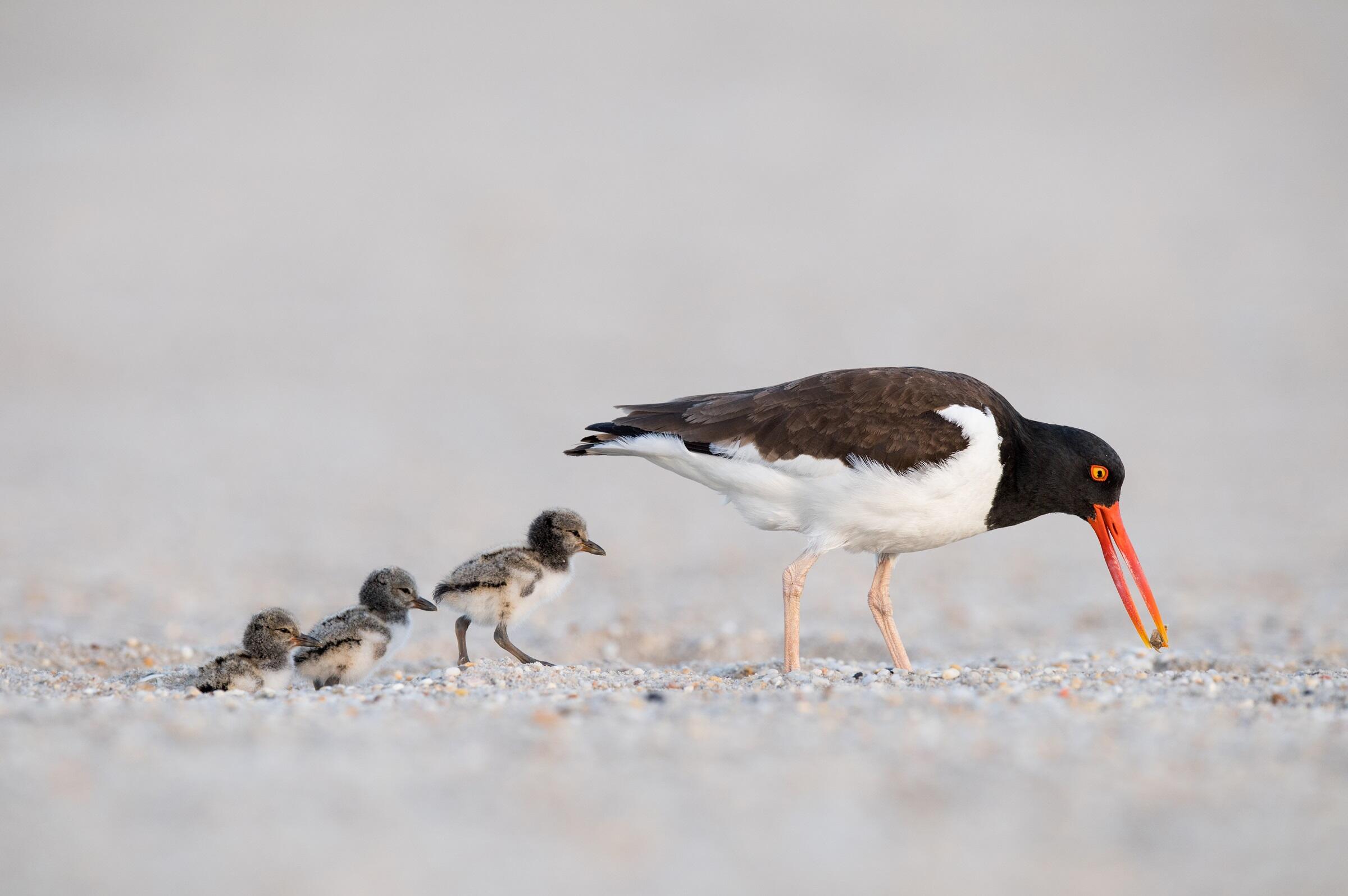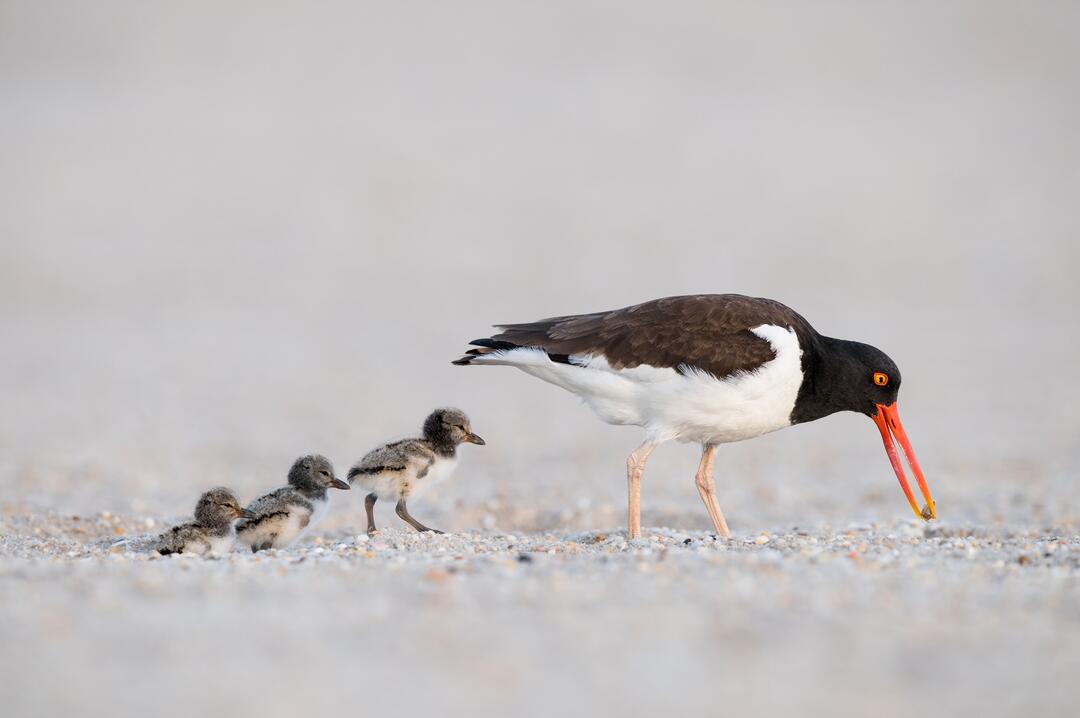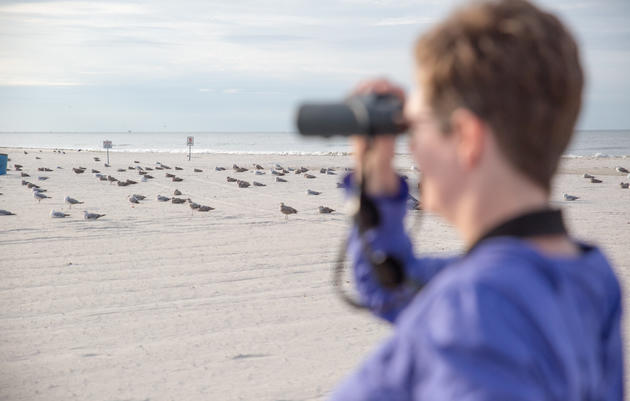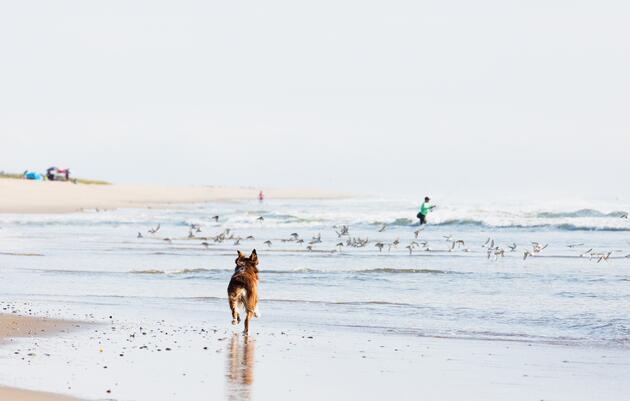Every May–August, vulnerable species like the Piping Plover and American Oystercatcher nest and hatch chicks on the shores of the Long Island Sound. Their chicks can weigh less than a single scoop of ice cream! These birds don’t just need our help, they need an award-worthy commitment.
Use this digital toolkit to get inspired at the municipal level and do more for beach-nesting birds. Why not go for gold?
Email ct@audubon.org before launching new programs so we can help ensure you’re on the path to success! You may need to sync up with a state wildlife agency first.
START HERE: BRONZE MEDAL OPPORTUNITIES
Monitor and fence off active nesting and foraging areas. Consult your state wildlife agency for permission, training, and guidance on stewardship and monitoring. String fencing (with explanatory signage and outreach) can help protect important roosting areas by ensuring humans and animals maintain a safe distance.
Install interpretive signage. Beach visitors aren’t bird experts, so how could they know their behavior is potentially harmful? Help them learn with basic, colorful signage that explains beach-nesting bird biology, conservation needs, and ways humans can help.
Host a cleanup. Trash attracts predators, from Fish Crows to raccoons. String-like trash, including monofilament fishing line and balloon ribbons, can entangle and kill birds. The less trash, the safer, cleaner, more enjoyable beach for all!
BUILD UP: SILVER MEDAL OPPORTUNITIES
Pre-fence all suitable nesting habitat. Think of symbolic fencing as an airport landing zone—you can help show birds the best place for them to land by sectioning off nesting sites from public use starting in the spring. This gives birds, and beachgoers, clear space to rest (and nest). Pre-fencing happens early in the season (in March or early April), ideally before the birds return and start to establish territories, to give them a safe place to find a mate, do courtship displays, etc.
Reduce vegetation cover. Piping Plovers, for instance, prefer sandy areas to nest. Reduce vegetation in the area between the dunes and the high tide line to <30% cover.
Say “no” to pets on the beach (only for a few months--April - August!). Strictly enforce existing “no pets” or leash laws. Even small, well-behaved dogs can scare beach-nesting bird parents off of their nests, prevent birds from accessing foraging habitat, and harm chicks or eggs. For sites that allow dogs on a leash, consider “no pet” rules in areas that provide nesting and foraging habitat for birds. Cats (even well-fed house cats) kill birds, and beach-nesting birds are especially at risk because they nest on the ground. If cats, especially feral cats, are present on your beach, please remove them.
Host a training session for beach-based staff. Lifeguards and Parks Department Staff, for example, are ideal spokespeople for birds since they’re already seen as beach “experts.” They can learn how to implement bird-friendly beach management activities (e.g. limit beach raking and driving on the beach), keep their eyes and ears out for the birds, and educate beachgoers.
AWARD-WORTHY: GOLD-LEVEL
Extend “fence” lines, or symbolic fencing, from dune to water line or around important foraging areas. Beaches with really high numbers of visitors and recreational use can close down an entire column of beach (from the dune to the water line) to foot traffic during the summer to protect nesting shorebirds/seabirds.
Create foraging habitat. Beach-nesting birds can forage and/or bathe in pools of shallow water. Some land managers dig out shallow areas of the beach in the winter so that they’ll become ephemeral pools in the spring. Consult your local state and federal wildlife agencies to develop a habitat management plan for your site.
Manage predators as needed. This includes red fox, feral cats, Fish Crows, American Crows, and raccoons, and may require lethal control. U.S. Fish and Wildlife Service staff may be able to help you develop a communications plan and messaging around beach predator management.
Choose nature-based solutions to coastal resiliency rather than hard infrastructure. Coastal engineering and hard structures such as groins, sea walls, and artificial dunes can decrease the suitability of or take away beach-nesting bird habitat. Instead, allow natural coastal processes to function.
Embrace local partnerships. Engage local youth groups, volunteer organizations, and community groups in coastal stewardship. Consider partnering with local universities to conduct research to better understand threats, habitat suitability, food resources, and other factors affecting beach-nesting birds at your site.
Additional Resources:
How to "Be a Good Egg" at the Beach
Make a difference and save a life by following a few simple steps
Dogs on Beaches: Know Before You Go
To keep our beaches safe for shorebirds, we ask dog-walkers to visit alternative recreational spaces during the nesting season. Read on to find a dog park near you!
Sharing the Waterways: A Guide to Boating with Birds
Connecticut’s offshore islands provide critical nesting habitat for an array of birds. Here's how to avoid disturbing them.
How you can help, right now
Get Involved
There are so many great ways you can get involved with Audubon Connecticut and make a difference for both the wildlife and the people who call Connecticut home.
Visit Our Centers
Connect with our nature centers in Greenwich, Sharon, and Southbury. Each unique center offers trails, educational resources, conservation opportunities, and more.
Support Us
Through land stewardship, science, education, and advocacy, Audubon Connecticut works across the state to preserve habitat and protect bird species that are of state, national, and global concern.









